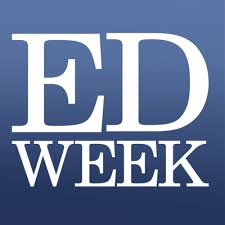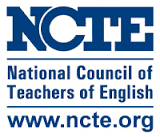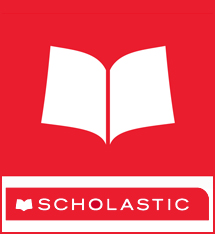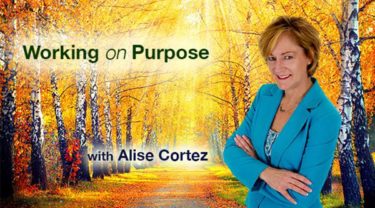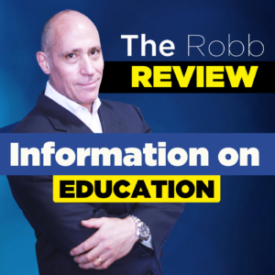Of Courage, Possibility, and Dwelling in Hope
By Travis Crowder
Exceptional writing teachers have taught me valuable lessons about how writers find ideas. Over time, writing has become a space for me to wrestle with my thinking, and I’ve accepted that when I finalize a blog or book, or essay, that piece of writing is only as good as my current understanding of the topic is. It is imperfect, but that’s what makes it worthwhile. It’s an invitation to continue grappling with an idea. It’s in this space that I commune with the philosophy that defines my classroom. I write to discover things about teaching young people. Many times while writing into ideas about engaging readers and writers, I’ve forged new thinking. Generally speaking, I’m always excited to sit down with my notebook and a cup of coffee and just write. Beautiful things lurk at the edges of writing. I’m always amazed at the possibility of discovery.
It was in this spirit that I sat down to craft this blog post. So many experiences from the past year were, in my opinion, noteworthy things to write about. Because of the pandemic, I shifted from physical to digital notebooks. During hybrid and remote teaching, I learned a great deal about engaging readers and writers, even from a distance. I found the intersection of poetry and writing to be a meaningful place to explore ideas. And so did many students. But each time I sat down to craft any one of these ideas, I found my writing leaning elsewhere. Instead of writing about strategy and engagement in literacy, the ideas tilted toward my current teaching context.
You see, this current year has been one of the hardest of my career. Not just because of the pandemic— although it has definitely contributed— but because of the continued, intensive push to standardize. Instead of decreasing, conversations about standardization have actually increased. During lesson planning periods, I’ve been asked repeatedly what standards I’m tying my lesson to and to explain the exact procedural plan for the lesson. Trying to argue that many standards are embedded in authentic reading and writing practices is futile. Explaining that identifying specific procedures for a plan is difficult when planning without students is a challenge, especially when traditional ideals plague any sort of PLC. I’m not against standards or having a specific lesson plan, but across time, I’ve learned that rigid alliances between classroom activities and standards and allegiance to a specific lesson plan suffocate opportunities for creativity. The expectation with lesson planning, it seems, is that every activity and assessment will be planned prior to walking into a room of students. Essential questions have to echo the swollen lexicon of the standards. I much prefer to ask engaging questions, but they have been critiqued by administrators who prefer cold, antiseptic questions instead of ones that genuinely excite inquiry. The language we use in our lessons or in essential questions may be academic, but, if it lacks relevance, it’s useless. And if our procedures don’t allow us to follow our students’ inquiries, what good is the lesson?
The disturbing contradiction I’ve witnessed reveals itself in actions. Lip service is paid to giving students space and time to complete tasks and receive extra practice in a skill area, but allegiances to pacing guides and year-long plans tell another story. Emphasis is placed on completing tasks quickly and moving on to another assignment. Recently, an instructional coach with very little literacy background said, in reference to a skill, Oh, that’s easy to teach. I found an activity online students can use to learn that skill. Here it is. Let me know how it goes. It’s as if a quick online search will meet the needs of every student I teach. Why spend time listening to them talk about their reading and writing lives if an online search will do all of the work?
In early December, while revisiting an anticipation guide after a novel study, several students explained that they realized how complex ideas are. They realized that gray areas exist. I can’t quantify that or give that a grade. I can’t plot their conversation (and just to be clear, they were facilitating the conversation, not me) on a graph and track progress toward a goal. And who would want to? The conversation took a turn while they were discussing, and it veered away from the main topic at hand. Yes, the conversation was different, but it was still relevant. I didn’t herd them back into territory where the standards, essential question, and goals lived. I let their conversation roam freely. Because that’s what conversation does. It’s fluent and alive and it deepens as we move further and further into ideas. I couldn’t have found a template for a conversation like this online. And I wouldn’t want to.
Again and again, though, I’ve watched instructional support staff offer worksheets and activities that were the result of an internet search. I’m more interested in moving with the flow of conversation and helping students make sense of ideas they land on, not prescribing documents I find online. Instead of these worksheets, students could be working on independent passion projects, writing about a book they’ve read and loved, or working with a partner to generate more ideas for their writing notebooks. At the end of class, students could share beautiful lines from their writing or powerful lines from their independent reading on a class Padlet, with a partner, or with the whole class.
Honestly, PLCs have become places where I generate lessons that are difficult to use. The lessons aren’t inherently bad, but I’ve rarely seen a lesson plan proceed as written when it greets a group of students. Instead of trying to create plans independently of students, we could spend our time interrogating our curriculum and ourselves and finding ways to center BIPOC (Black, Indigenous, People of Color) authors. Instead of centering standards and goals, we could discuss ways to center students and questions of humanity, too. This means decentering the system, and when we decenter it, lesson planning has room to breathe.
And so do we and our students.
Every time I consider lessons or activities, I have to make students the core of my work. I don’t consider their test scores or projected test scores or grades. I consider them— their stories and humanity. I consider what they need, how current events influence them, and how I can sensitively handle issues that bombard them. It takes courage to think this way, though, and honestly, I’m still learning what it means to be courageous in the classroom. But we all need courage to deconstruct those imaginary boundaries that have been placed around our classrooms. These boundaries tell us what is “effective” and “necessary.” But we can do better. I know I can.
Nothing I do is perfect. There are many days that lessons fail, that students are unmotivated, and that I am not at the top of my game. There are days when students refuse to write, can’t find the energy to read their independent reading books, or aren’t interested in something I’ve planned, certain that it will engage them. But there are also many days filled with deep reading and conversations. There are many days where students can’t wait to talk with me about a book they’ve read or want an air high-five (the COVID version of a high five) because they’ve read another book and last year they didn’t even read one! There are other days when students write poems or responses that make me cry or cheer along with them. These are the days I am overwhelmed with joy.
Last August, I started a doctorate in curriculum and instruction at UNC-Wilmington. Coursework has focused on curriculum studies and leadership, and since starting, I’ve learned a ton about what it means to think and to write into current iterations of curriculum. I’ve realized, yet again, that choices we are making in education are conscious choices, and while we know that they do not work, we continue to stand beside them.
I still dwell in hope, though.
I imagine an educational space where students write and read to find themselves, where they learn about their world and engage in the tough questions that have been part of the human experience for decades. I imagine a place where we attend PLCs to confront our biases and to engage in critical thought about what we teach and how we teach it. And we encourage change and refuse to shy away from conversations that are “too controversial.”
This is what I imagine.
As I move further into 2021, I want this flame of possibility to burn brighter. I want my reading life to move me to action and to encourage others to do the same. I know many are out there, and together, we are working for a better educational space. Sometimes I feel incredibly isolated, but I have to remember, as John Lennon said, “You may say I’m a dreamer, but I’m not the only one.”
Follow Travis on Twitter @teachermantrav
Learn more about Travis!
252 total views




